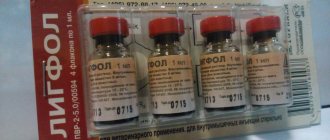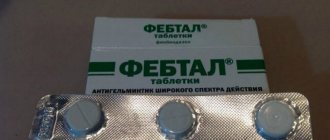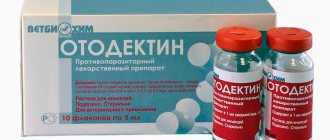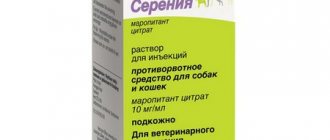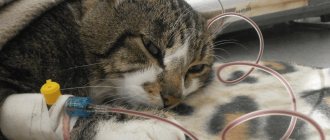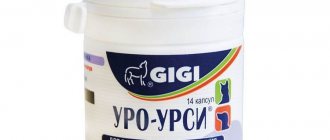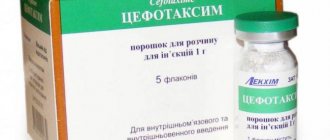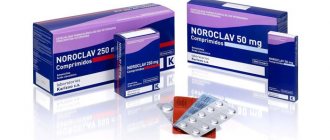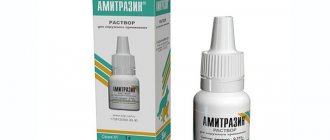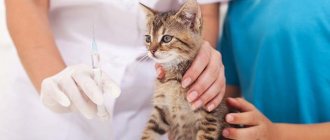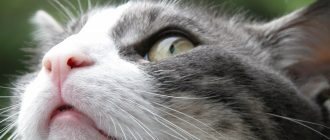general description
Duphalight is available in the form of a transparent yellow liquid. A sterile solution intended for injections and droppers is packaged in polymer bottles with a capacity of 500 ml. They are sealed with rubber stoppers, which must be rolled up with aluminum lids. Thanks to this packaging, the solution from the bottle can be used repeatedly. To prevent foreign impurities, bacteria and viruses from getting into the liquid, the medication is taken through a rubber stopper with a sterile syringe. If you follow simple aseptic rules, you will be able to maintain the sterility of the solution.
Important! After opening the bottle, the veterinary drug is suitable for use for 28 days. After this period it must be disposed of.
When purchasing, pay attention to the presence of drug labeling, as well as information about the manufacturer and the release date of the composition. Medicines without a label cannot be used to treat animals.
Storage conditions
It is recommended to store the bottle in a dry place, away from children or pets. It should also not be exposed to solar radiation. Storage temperature – 2-20C. Freezing of liquid is not allowed. The shelf life is 3 years, but after the bottle is opened, this period is reduced to 28 days.
IV drip at home
Visit the profile section of our Medical Examination forum or leave your feedback in the comments below. More opinions means more useful information, it will be useful to someone. If there are good and interesting videos on the topic of the article, write and I will insert them into this publication.
Composition and action
Duphalight is a complex of vitamins, electrolytes, salts and amino acids. The preparation contains B vitamins:
- thiamine (B1);
- riboflavin (B2);
- D-panthenol (B5);
- pyridoxine (B6);
- cyanocobalamin (B12).
The solution also contains vitamin PP or nicotinamide. Almost all B vitamins are involved in metabolic processes. Some of them take part in the synthesis of hemoglobin, accelerate tissue regeneration and wound healing. They have a positive effect on the functioning of the food and nervous systems.
The drug contains electrolytes of calcium, magnesium and potassium, which help restore the balance of salts in case of dehydration. The medicine contains dextrose, which provides the necessary energy for the animal's body, and amino acids. Arginine, histidine, lysine and other amino acids are the “raw materials” for the synthesis of protein cells, and also take part in many biological processes.
Duphalight has the following effects on the animal’s body:
- replenishes reserves of vitamins and nutrients;
- normalizes the production of enzymes and hormones;
- restores the metabolism of proteins, carbohydrates and fats;
- increases immunity;
- promotes better absorption of feed;
- stimulates growth and proper development;
- accelerates the rehabilitation period after serious illnesses and operations.
When using the drug, the animal’s body becomes more resistant to stressful situations. By improving metabolic processes and the intake of useful components into the body, the condition of the skin improves and the coat becomes thicker.
When administered subcutaneously or intravenously, the components of the drug quickly penetrate the bloodstream and spread throughout the body.
Duphalight
DUFALIGHT
(USA development organization)
I. GENERAL INFORMATION
Trade name of the drug: Duphalyte.
International nonproprietary name: B vitamins, electrolytes, amino acids.
Dosage form: solution for injection.
The medicinal product in 1 ml of solution contains at least:
| vitamins | amino acids and nutrients | |||||
| Vitamin B1 | 0.10 mg | Dextrose | 45.56 mg | DL-Tryptophan | 0.01 mg | |
| Vitamin B2 | 0.04 mg | L-Arginine | 0.025 mg | DL-Valine | 0.05 mg | |
| Vitamin B6 | 0.10 mg | L-Cysteine | 0.01 mg | Excipients | ||
| Vitamin B12 | 0.05 mcg | Monosodium glutamate | 0.04 mg | |||
| Nicotinamide | 1.50 mg | L-Histidine | 0.01 mg | Methyl paraben | 1.80 mg | |
| d-Panthenol | 0.05 mg | L-Isoleucine | 0.01 mg | Drank paraben | 0.20 mg | |
| electrolytes | L-Leucine | 0.04 mg | Phenol | 0.10 mg | ||
| L-Lysine | 0.03 mg | EDTA | 0.15 mg | |||
| Calcium chloride | 0.23 mg | L-Methionine | 0.01 mg | Sodium acetate | 2.50 mg | |
| Magnesium sulfate | 0.29 mg | DL-Phenylalanine | 0.03 mg | Lemon acid | pH regulator | |
| Potassium chloride | 0.20 mg | L-Threonine | 0.02 mg | Water for injections | up to 1 ml | |
Duphalight does not contain genetically modified products.
In appearance, Duphalight is a transparent aqueous solution of yellow color.
Duphalight is produced packaged in 500 ml polymer bottles of appropriate capacity, which are hermetically sealed with rubber stoppers reinforced with aluminum caps.
The drug is stored in the manufacturer's sealed packaging, in a dry place, protected from direct sunlight, separately from food and feed at a temperature of 2 °C to 20 °C.
The shelf life of the medicinal product, subject to storage conditions, is 2 years from the date of manufacture. After selecting part of the drug from the bottle, subject to aseptic rules and specified storage conditions, it can be used repeatedly for 28 days. Do not use Duphalight after the expiration date.
The drug is stored in places inaccessible to children.
Unused medicinal product is disposed of in accordance with legal requirements.
II. PHARMACOLOGICAL PROPERTIES
Duphalight belongs to the group of means for the maintenance therapy of weakened animals or animals with dehydration.
Duphalight can be used in cases where oral administration of medications is difficult.
The use of the drug in productive animals and poultry during the fattening period improves growth performance, feed absorption and, by stabilizing the electrolyte balance, reduces chicken mortality.
Duphalight contains B vitamins that normalize the functions of enzymes; amino acids, which are available material for protein synthesis, erythropoiesis and hormone transport; dextrose, necessary to supply the body with energy, and electrolytes - to replace salts lost by the body.
With intravenous, subcutaneous and intraperitoneal administration of the drug, the active substances included in Duphalight are quickly and completely absorbed. The drug is excreted from the body mainly through urine and bile.
Duphalight injection can also be used to prevent stress during transportation or movement of animals and poultry
In terms of the degree of impact on the body, Duphalight is classified as a safe substance (hazard class 4 according to GOST 12.1.007).
III. ORDER OF APPLICATION
Duphalight is used for the prevention and treatment of hypovitaminosis, protein metabolism disorders, and increasing the resistance of farm animals, including birds, as well as cats and dogs.
It is prohibited to use the drug if animals are individually hypersensitive to its components.
The drug is administered using the following methods of administration and dose:
| Animal species | Method of administration | Dose |
| horses | slowly intravenously | up to 100.0 ml per 50 kg of animal weight foals: up to 30.0 ml per 5 kg of animal weight |
| cattle | slowly intravenously, subcutaneously, intraperitoneally; | up to 100.0 ml per 50 kg of animal weight calves: up to 30.0 ml per 5 kg of animal weight |
| pigs | slowly intravenously, subcutaneously, intraperitoneally; | up to 100.0 ml per 50 kg of animal weight piglets: up to 30.0 ml per 5 kg of animal weight |
| dogs | slowly intravenously, subcutaneously | up to 50.0 ml per 5 kg of animal weight |
| cats | slowly intravenously, subcutaneously | up to 50.0 ml per 5 kg of animal weight |
| chickens | subcutaneously | 0.5-1.0 ml per chicken |
Duphalight can be used during pregnancy and lactation.
Overdose symptoms have not been established.
No peculiarities of action were identified upon initiation of administration and discontinuation of the drug.
Omissions should be avoided when administering the next dose of the drug, as this may lead to a decrease in therapeutic effectiveness. If you miss one dose, give it as soon as possible. Next, the course of treatment must be resumed in the dosages and dosage prescribed in the instructions.
When using the drug in accordance with these instructions, side effects and complications, as a rule, are not observed. If allergic reactions occur, stop using the drug and prescribe antihistamines and symptomatic treatment.
Interaction with other drugs has not been established.
After using the drug, animal products can be used for food purposes without restrictions.
IV. PERSONAL PREVENTION MEASURES
When working with the drug, you should follow the general rules of personal hygiene and safety precautions provided for when working with veterinary medicinal products. When working with the drug, do not drink, smoke, or eat. When you finish handling the product, wash your hands with soap and tap water.
In case of accidental contact of the drug with the skin and mucous membranes, they must be washed with plenty of water. People with hypersensitivity to the components of the drug should avoid direct contact with Duphalight. If an allergic reaction occurs or if the drug accidentally enters the human body, you should immediately contact a medical facility (bring with you the instructions for use of the drug and the label).
Empty medication packaging must not be used for household purposes; it must be disposed of with household waste.
When to use
If you follow the instructions for use, you can use Duphalight for cats in the following cases:
- with hypovitaminosis caused by poor diet and other factors;
- in case of metabolic disorders;
- with weak immunity.
Often the medicine is prescribed for the prevention of immunodeficiency and vitamin deficiency. The drug is also suitable for cases where the animal cannot eat food on its own, suffers from vomiting and nausea, or has serious problems with the digestive system. The vitamin complex is successfully used as an auxiliary therapy in the following situations:
- when dehydrated;
- when exhausted;
- for diseases of the liver and other internal organs;
- in case of hormonal imbalances;
- after severe blood loss;
- after surgical interventions;
- during intoxication.
The drug can be used for weakened kittens that are developmentally delayed. The use of the drug for lactating and pregnant females allows you to get healthy offspring and prevent the development of various pathologies in kittens.
Note! The multivitamin complex can also be used to prevent stress in cats that occurs during transportation, moving, going to the veterinarian, etc.
Indications for prescribing the medication
This drug is characterized by a wide spectrum of action, which includes:
- treatment of hypovitaminosis in cats of varying severity;
- elimination of inflammatory processes identified in digestion;
- stabilization of protein processes in the body;
- prevention of stressful situations;
- normalization of body function after severe blood loss;
- relief from vomiting, poor appetite, intoxication and fever;
- improving the functioning of the immune system;
- normalization of hormonal levels;
- restoration of normal functioning of the body after surgery.
Advice. To achieve maximum results from treatment, before starting to take a multivitamin complex together with other medications, it is necessary to agree on the course of treatment with a veterinarian.
How to use
The drug can be administered intravenously or subcutaneously. The first option is preferable for severely weakened animals. If the medicinal liquid is administered intravenously, this should happen very slowly. IVs are allowed. You can dilute the medicine with saline solution, but this is not necessary.
On average, 1 kg of weight requires 10 ml of liquid, although the dosage of Duphalight can be adjusted by the doctor depending on the condition of the animal. If the drug is used as an adjuvant therapy, then it is administered once every 2 days. If the medicine is used to feed an animal, then it is administered every day, with the daily dose divided into two doses. Typically, the duration of treatment is 10-14 days, and when used for preventive purposes, a 5-day course is sufficient.
Dufalight can be used simultaneously with other medications. It is compatible with various feed additives and feeds, since the content of all active components is carefully calculated by specialists.
General information
Duphalight is available in the form of a sterile, light yellow solution in a sealed glass bottle of 0.5 liters and is used for injection intravenously (dropper) and subcutaneously. This is convenient if the animal is weakened and there is no possibility of oral administration. In cases of fasting or dehydration, bypassing the gastrointestinal tract, the solution is immediately sent into the blood with the delivery of a complex of minerals and vitamins. Instructions are always included in the packaging of the drug.
The description says that the medicine is indicated for use in the following cases:
- - reduced immunity and anemia;
- - intoxication and blood loss;
- - slowdown in development and growth;
- — maintaining elderly individuals;
- — stress and the formation of resistance to it;
- — metabolic disorder;
- - postoperative or recovery period after an illness;
- - general exhaustion.
The dosage suggests 10 ml of solution per 1 kg of cat weight. If duphalight is necessary, the veterinarian will adjust the amount. Auxiliary treatment involves taking the solution once every 48 hours. If the use is in the nature of nutrition, take it daily, splitting the dose into 2 injections, the administration of which should be done slowly and not cause a shock.
The duration of the course is on average two weeks (maybe a month of use), preventive goals are achieved in 5 days. Chronic renal failure (CRF) in cats allows daily infusions of Dufolight diluted in half with saline due to the pain of the drug. Its use in combination with other drugs without significant restrictions and side effects is indicated, with the exception of individual intolerance to the components, deterioration of well-being, allergic reaction or dermatosis.
Opened Duphalight must be used within 28 days; residues cannot be used after the specified time has elapsed. The general shelf life is up to 3 years; it must be stored out of the reach of pets and children, away from direct sunlight and freezing, at a temperature of 2 to 20 degrees.
Are there any restrictions?
The vitamin complex is approved for use by cats and kittens of any age. It is equally suitable for newborn kittens and old pets with various chronic diseases. It can be used during pregnancy and lactation.
It is necessary to stop using the medicine only in case of intolerance to the components. In this case, allergies of various types usually occur. In such a situation, it is worth choosing another medicine for your pet, although Duphalight has no analogues.
The medicine is well tolerated by cats. Side effects usually do not occur. The exception is cases of intolerance to the drug, although in practice this is extremely rare. The instructions indicate that no cases of overdose have been registered, but this does not mean that you need to exceed the dose or violate the regimen of use.
Duphalight, fl. 500ml
Duphalight is used for the prevention and treatment of hypovitaminosis, protein metabolism disorders, and increasing the resistance of farm animals, including birds, as well as cats and dogs.
Duphalight is intended for maintenance therapy of weakened animals or animals with dehydration, especially in cases where the use of drugs internally is difficult.
The use of the drug in productive animals and poultry during the fattening period improves growth performance, feed absorption and, by stabilizing the electrolyte balance, reduces chicken mortality.
The amino acids included in Duphalight are available material for the synthesis of blood proteins, antibodies, erythropoiesis and hormone transport.
Duphalight contains dextrose necessary to supply the body with energy, electrolytes to replace salts lost by the body, as well as B vitamins to normalize enzyme function.
With intravenous, subcutaneous and intraperitoneal administration of the drug, the active ingredients included in Duphalight are quickly and completely absorbed. The drug is excreted from the body mainly through urine and bile.
DOSES AND METHOD OF APPLICATION
The drug is administered using the following administration methods and doses:
Method of administration:
Horses - slowly intravenously;
Cattle, pigs - slowly intravenously, subcutaneously, intraperitoneally;
Dogs, cats - slowly intravenously, subcutaneously;
Chickens (1 day old) - subcutaneously.
Dosage:
Horses, cattle, pigs - up to 100 ml per 50 kg of animal weight;
Foals, calves, piglets - up to 30 ml per 5 kg of animal weight;
Dogs, cats - up to 50 ml per 5 kg of animal weight;
Chickens (1 day old) - 0.5-1.0 ml per chicken.
Duphalight can be used during pregnancy and lactation.
The drug is compatible with all feed ingredients, feed additives and other medications.
Advantages and disadvantages
Duphalight has the following advantages:
- Efficiency.
The results of use are noticeable within a few days. The drug has helped many cat owners and veterinarians rescue pets who had completely refused to eat and had little chance of survival. - Safety.
The medicine is approved for cats and kittens of all age categories. There are practically no restrictions in use. - Versatility.
The solution is suitable for treatment and prevention, and can be used as an adjuvant. - Compatibility.
Duphalight goes well with various feed additives and medications. - Good tolerance.
The drug does not cause side effects even in case of overdose.
The main disadvantage of the drug is its large packaging. Buying a 500 ml bottle of Duphalight for cats, the price of which ranges from 900-1100 rubles, is often impractical. In addition, opened packaging can only be stored for a month. On forums, people often resell leftover medicine or even give it away for free. If you decide to take the drug from another person, you must ensure that it is still fit for use and has been stored under the correct conditions. If in doubt, it is better to go to the nearest veterinary pharmacy.
Application
“Dilute duphalight in half with saline or even 4 to 6 (so it burns less) and inject it into the withers as slowly as possible. It is better to carry out the procedure with an assistant, the cats swear and break out. And so, duphalight is well absorbed and invigorating. You can’t solder them, it won’t give any effect.”
“It’s still better to administer Duphalight by dropper, since the injection is very stinging. It helped our cat well with chronic kidney disease, stabilizing his condition, improving his appetite and activity.”
“The kitten was born as the only one in the litter, was frail and weak, with a disappointing diagnosis, and refused to drink its mother’s milk. I decided to put him on his feet, fed him regularly and decided to introduce Duphalight from 3 months. Following the recommendations on the packaging and the advice of the veterinarian, I gave the injections slowly - there was a result. The kitten got stronger, grew up and even got rid of parasites.”
The price of Duphalight may seem high to some, low to others - within 1000 rubles on the Internet, you can also buy it in veterinary pharmacies and pet stores. In large cities (Moscow and St. Petersburg) home delivery is offered, so the cost may be higher. Those owners who cannot buy the drug (or do not want to buy such a large volume) are looking for analogues.
The manufacturer claims that they are absent, but treatment can still be carried out
- -catosal;
- -roncoleukin;
- - gamavit;
- - “balance” solution 5% glucose
Their composition replicates some components, while simultaneously providing a therapeutic effect.
Despite its recent appearance on the markets, duphalight has gained a positive response from both owners and veterinarians. A wide range of applications, good results in both treatment and prevention of all pets increase its popularity. The main thing is not to administer it yourself; it is better to consult a veterinarian and follow his recommendations.
Owner reviews
Evgenia, owner of a Siberian cat:
“Chronic renal failure became a terrible death sentence for us. We understood that the cat’s fate was decided, but we wanted him to live a little longer. This was complicated by the fact that Fluff almost completely refused to eat, so he began to lose weight before his eyes. The doctor recommended Duphalight. They gave me IVs with saline solution. The cat felt noticeably better. At the same time, the kidneys were treated. The product is expensive, but effective. The results were noticeable almost immediately.”
Oksana, owner of a 7-year-old cat:
“Due to liver disease, the cat began to vomit severely. I tried to force-feed her, but it was useless because she vomited on everything. On the doctor’s advice, they started giving Duphalight injections because the cat began to lose weight and become weaker. The drug helped Kisula recover faster, although she did not tolerate the injections well. Apparently they are painful, so she struggled and hissed.”
Chronic renal failure in a cat. I really need advice!
The 13-year-old cat had lost a lot of weight over the past 2 months, but was still active, only he stopped eating his dry Royal Canin, and apparently ate “game” on the street.
Donated blood for biochemistry: Creatinine 910 Urea 27.4 Protein 75.9 ALT 65 AST 36 GGTP 1 Alphamylase 2541 Bilirubin 1.1 Glucose 4.7 Alkaline phosphatase 38
Diagnosis: chronic renal failure, terminal stage.
Purpose: methionine 1/2 tablet 2 times a day, canephron 1/3 ml 2 times a day, Renal Advanced dietary supplement for cats with chronic renal failure (we added this ourselves). The tests were taken 14 days ago. The cat had an appetite for 12 days, RK Renal, then he began to refuse, for the last 2 days he did not eat anything, but drank water and slept all the time. He peed and pooped normally, but the last time he passed it on the carpet, which had never happened to him in his life. He lost even more weight. Today we bought him 3 jars of baby puree - beef, turkey and cauliflower, and added Renal Advanced for the first time. I was very interested, but didn’t eat it myself. They mixed meat with vegetables and began to feed them from their fingers. During the day I ate 30 grams of the mixture. In the evening we came home from work - he greeted us, purred, and asked for food. Alive, basically. I ate 1 can of the mixture (30 g). I know that meat is not allowed, but what should I do if he doesn’t eat anything anymore?
How balanced is the treatment? Is it worth replacing Canephron with ketosteril? We have not yet been prescribed IVs, nor gastroprotectors or sorbents. I’ve been reading about treatment regimens for chronic renal failure, and I started thinking – it’s somehow poor here.
I beg your comments.
The treatment is not very good. Need to drip. Pain relief. Creatinine 900 is a lot. After a series of IVs, repeat biochemistry is needed to see how the indicators have decreased.
An ultrasound must be done.
Well, the doctor at the clinic stubbornly argued that canephron and ketosteril have the same effect, which was very strange to me. She said that canephron reduces creatinine. And she advised that if I give ketosteril, I should remove the canephron.
As far as I understand, ketosteril replaces amino acids in the absence of protein? And if our cat eats meat puree, maybe we shouldn’t give ketosteril? In addition, I read somewhere that you can’t take ketosterol with such a high creatinine, you need to wait for a decrease.
In fact, I know that the cat is doomed and death can happen very quickly. But we really want him to stay with us longer! After all, there is a slight positive trend!
We have a similar situation, only the doctors didn’t even prescribe treatment. The cat is 20 years old. Creatinine 575 Urea 55.4 ALT 62 AST 201 Amylase 3815 Glucose 5.5
The doctor we visited for the first time said to rinse your mouth with chamomile because... the cat had tartar and the process of rotting and slight bleeding began in his mouth, then the cat began to fade away - he goes behind the sofa to his bedding, stopped eating Renal kidney food, rarely drinks (only last night he drank kefir and water). He practically can’t walk, his paws are spreading, I help him to go to the toilet to pee (he hasn’t pooped for a long time, 3-5 days). They came for a second urine test - the white doctor was different and said that the test was bad and we needed to take blood, prescribed antibiotics to stop the bleeding in the mouth and remove the dark liquid - they injected us for 3 days - it seemed to be better in the mouth, but he didn’t eats nothing (even recovery pate)
Doctors change shifts, our doctor will only be on Sunday, now they called to try an IV, the doctor says that the cat may not tolerate it or will struggle and get nervous and then she won’t do it. They didn’t prescribe Canephron or Ketosteril, the cat got used to it very pitifully, we lived together all the time, I took him in when he was still a kitten. Now he is constantly looking at one point. I can’t do euthanasia, neither my hand nor my tongue will rise... The cat is deaf, he had strokes before (we think) he would flinch from sharp sounds and would shake and twitch, then he would barely come to his senses, the last time this happened was in mid-September . Tell me how to fight for his life, do you need to urgently drip IV or PC? What solution and how often?
How much?
The positive characteristics of the drug include its price, which makes its use affordable compared to other vitamin preparations.
On average, the cost of Duphalight is about a thousand rubles.
I graduated from the National State Agricultural Academy and have been working as a veterinarian for 8 years.
In my free time, I write articles about the diagnosis and treatment of cats.
Duphalight's analogs
Unfortunately, not all cat owners can afford to purchase Duphalight due to its relatively high cost, so the question arises of choosing a more budget-friendly medication. Duphalight does not have complete analogues, but there are drugs that partially replicate its composition and have the same therapeutic effect.
Analogues of the drug:
- Glucose solution 5% “Balance”;
- Gamavit;
- Katozal;
- Roncoleukin.
Recently I have been using the vitamin-amino acid complex for subcutaneous and intravenous use “Dufalite”. I really like its effect, there is a composition of the drug, etc. After talking with me at an oncology conference, I received the most negative impressions, so I found an alternative for myself - a “normal” complex.
Table: drug analogues
| Drug name | Compound | Release form | Cases of appointment | Contraindications | Negative reactions | Price |
| Glucose solution 5% “Balance” |
| Injection |
|
| When a large amount of the drug is administered, excess fluid in the body may be observed, accompanied by a violation of the water-salt balance. | 100 ml - 40 rubles |
| Gamavit |
| Injection |
|
| Allergic rashes. | 100 ml - 860 rubles |
| Katozal |
| Injection |
| Hypersensitivity to the components of the drug. | Allergic reactions. | 100 ml - 760 rubles |
| Ronkoleikin | Human interleukin-2 recombinant. | Solution for infusion and subcutaneous administration |
|
|
| 3 ampoules with a dosage of 1 ml - 605 rubles |
